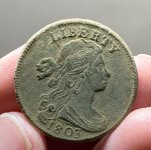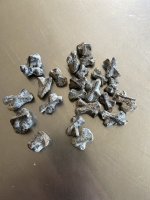Real de Tayopa Tropical Tramp
Gold Member
Re: Moctezuma's Tomb
Fascinating my friend. keep posting. Incidentally the building that you show in # 1702 was prob used in the firearm period since that type of window was used for firing, giving max view and firing angle, while also giving max protection to the shooter. Yes, it could also be used for a crossbow firing position.
Don Jose de La Mancha
Fascinating my friend. keep posting. Incidentally the building that you show in # 1702 was prob used in the firearm period since that type of window was used for firing, giving max view and firing angle, while also giving max protection to the shooter. Yes, it could also be used for a crossbow firing position.
Don Jose de La Mancha








